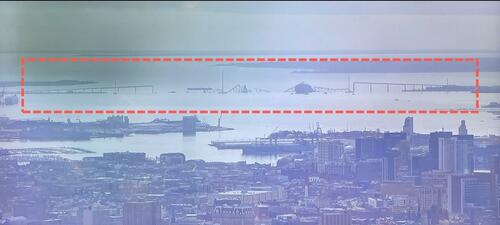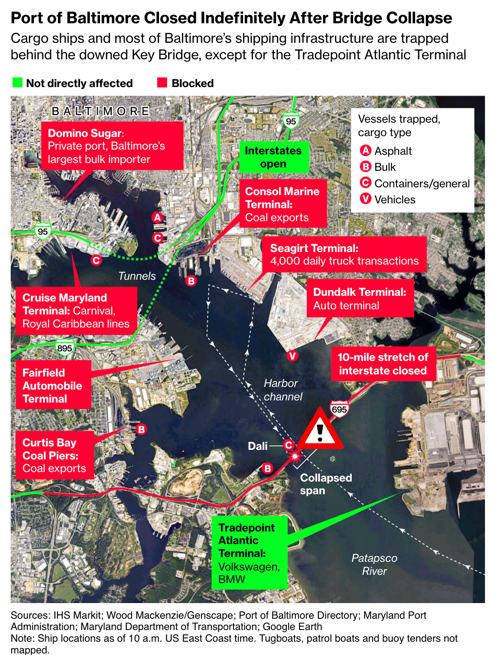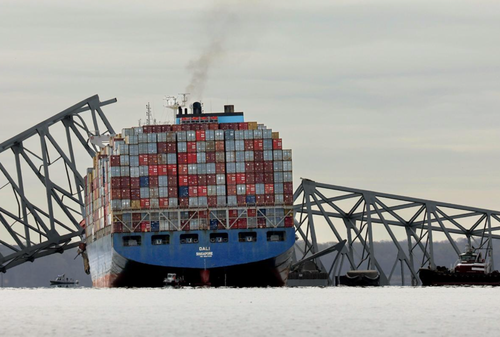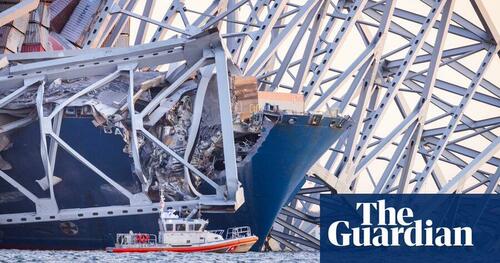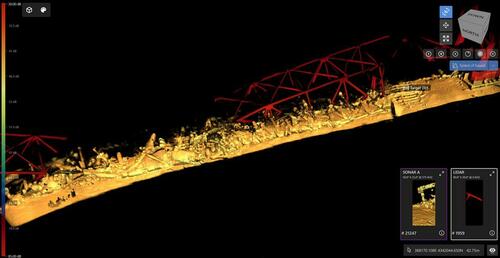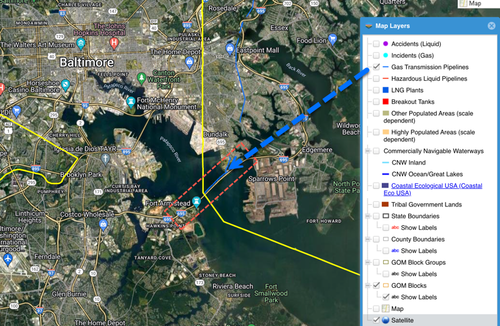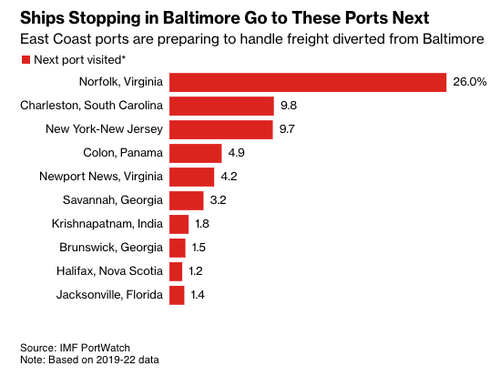Baltimore Bridge Collapse: US Army Corps Of Engineers Says Channel Fully Reopen By End Of May
Ten days after the catastrophic collapse of the 1.6-mile-long Francis Scott Key Bridge, blocking the critical shipping channel in and out of the Port of Baltimore, resulting in the partial freeze of the harbor, the US Army Corps of Engineers (USACE) announced in a press release late Thursday night a new “timeline for the restoration for safe navigation in and out of the Port of Baltimore.”
USACE expects the Fort McHenry Channel will be operational with a “limited access channel 280 feet wide and 35 feet deep” by the end of April.
“This channel would support one-way traffic in and out of the Port of Baltimore for barge container service and some roll on/roll off vessels that move automobiles and farm equipment to and from the port,” the agency said.
USACE engineers expect a much wider and permanent, 700-foot-wide by 50-foot-deep federal navigation channel by the end of May, thus restoring full access to the port.
On Sunday, Maryland Gov. Wes Moore told CNN, “We have a ship that is nearly the size of the Eiffel Tower that is now stuck within the channel that has the Key Bridge sitting on top of it.”
“That water is so murky that salvage divers cannot see any more than 1 to 2 feet in front of them,” Moore said, adding, “The collapse of the bridge is so distinct and so severe, with metal that is so … wrought together and pancaked that it continues to make this mission extraordinarily complicated and dangerous for those who are conducting it.”
On Tuesday, USACE released 3D images of the wreckage at the bottom of the shipping channel. They said, “These 3D images show the sheer magnitude of the very difficult and challenging salvage operation ahead.”
Captain John Konrad, CEO of Captain, pointed out the salvage operation could be more complicated than previously thought because of the risks the 984-foot Singapore-flagged container ship Dali is apparently “sitting atop a high-pressure underwater gas line.”
As of Monday, Bloomberg data shows dozens of bulk cargo, container, and vehicle carriers were being diverted to other US East Coast ports.
According to an analysis from the International Monetary Fund’s PortWatch platform, Norfolk, New York, and Charleston, South Carolina, are the ports most likely to absorb cargo.
Meanwhile, Gov. Moore and Baltimore Mayor Brandon Scott are in a bind because Moody warned that the bridge collapse could spark negative credit risk events for the city and state.
Even with the channel potentially reopening at full capacity by the end of May, the bridge, an important feeder to the port, and connection to the I-95 highway network for the Mid-Atlantic – could take years to rebuild.
Should we trust the timeline?
Tyler Durden
Fri, 04/05/2024 – 07:45
via ZeroHedge News https://ift.tt/7kn8BGK Tyler Durden
